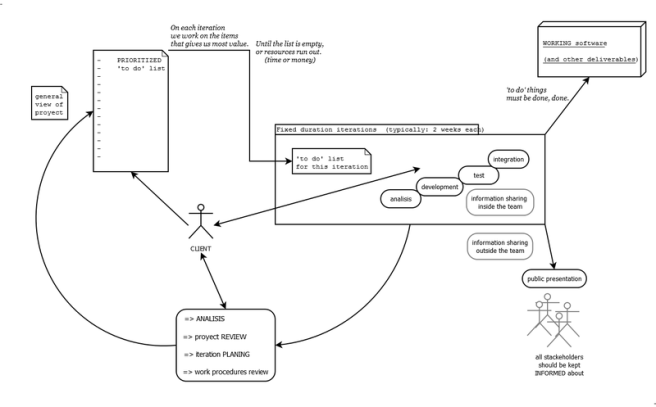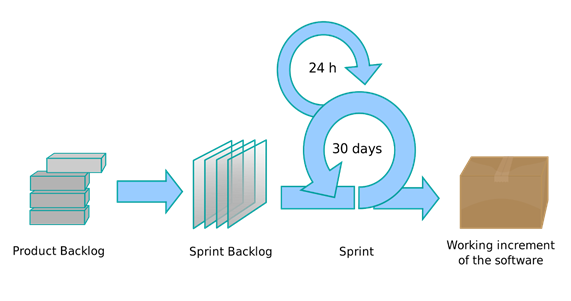
Sertifikasi TOGAF 2018: Mengapa, Apa dan Bagaimana?
The Open Group Architecture Framework (TOGAF) adalah sebuah framework untuk arsitektur enterprise yang menyediakan sebuah pendekatan komprehensif untuk mendesain, merencanakan, menerapkan dan mengelola arsitektur informasi enterprise.
1.Apa itu Sertifikasi TOGAF?
sertifikasi TOGAF adalah suatu program sertifikasi yang berupa pelatihan untuk validasi bahwa anda mempunyai pengetahuan, mampu menganalisa dan menerapkan pengetahuan TOGAF tersebut. Adapun fokus pada sertifikasi ini yaitu penerapan serta analisa pengetahuan dan pemahaman. Program pelatihan ini terakreditasi baik.
2.Mengapa Sertifikasi TOGAF itu penting?
Arsitektur TI memperoleh pengakuan yang semakin meningkat di seluruh perusahaan untuk kebutuhan bisnis. TOGAF adalah kerangka kerja, standar industri terbuka untuk Arsitektur TI, dikembangkan dan terus berkembang sejak pertengahan tahun 90-an oleh perwakilan dari beberapa perusahaan IT dan vendor organisasi terkemuka di dunia. Pengenalan program sertifikasi TOGAF memungkinkan organisasi besar (baik swasta maupun sektor publik) membakukan metode terbuka ini untuk Arsitektur TI. Ini merupakan langkah penting dalam membuat Arsitektur TI yang diakui, dan dalam memperkenalkan ketelitian dalam pengadaan alat dan layanan untuk Arsitektur TI.
3.Apa Saja Isi Sertifikasi TOGAF?
1. Introduction (Pengenalan)
1.1. Certification Document Structure
1.2. The Certification Process
2. Preliminary Phase (Tahap Awal)
2.1. Scope the Enterprise Organizations Impacted
2.2. Confirm Governance and Support Frameworks
2.3. Define and Establish the Enterprise Architecture Team and Organization
2.4. Identify and Establish Architecture Principles
2.5. Tailor TOGAF and, if any, Other Selected Architecture Frameworks
2.6. Implement Architecture Tools
3. Phase A: Architecture Vision (Visi Arsitektur)
3.1. Establish the Architecture Project
3.2. Identify Stakeholders, Concerns, and Business Requirements
3.3. Confirm and Elaborate Business Goals, Business Drivers, and Constraints
3.4. Evaluate Business Capabilities
3.5. Assess Readiness for Business Transformation
3.6. Define Scope
3.7. Confirm and Elaborate Architecture Principles, including Business Principles
3.8. Develop Architecture Vision
3.9. Define the Target Architecture Value Propositions and KPIs
3.10. Identify the Business Transformation Risks and Mitigation Activities
3.11. Develop Statement of Architecture Work; Secure Approval
4. Phase B: Business Architecture (Arsitektur Bisnis)
4.1. Select Reference Models, Viewpoints, and Tools
4.2. Develop Baseline Business Architecture Description
4.3. Develop Target Business Architecture Description
4.4. Perform Gap Analysis
4.5. Define Candidate Roadmap Components
4.6. Resolve Impacts across the Architecture Landscape
4.7. Conduct Formal Stakeholder Review
4.8. Finalize the Business Architecture
4.9. Create the Architecture Definition Document
5. Phase C: Information Systems Architectures (Arsitektur Sistem Informasi.)
5.1. Considerations for the Implementation Order
6. Phase C: Data Architecture (Arsitektur Data)
6.1. Select Reference Models, Viewpoints, and Tools
6.2. Develop Baseline Data Architecture Description
6.3. Develop Target Data Architecture Description
6.4. Perform Gap Analysis
6.5. Define Candidate Roadmap Components
6.6. Resolve Impacts Across the Architecture Landscape
6.7. Conduct Formal Stakeholder Review
6.8. Finalize the Data Architecture
6.9. Create Architecture Definition Document
7. Phase C: Application Architecture (Arsitektur Aplikasi)
7.1. Select Reference Models, Viewpoints, and Tools
7.2. Develop Baseline Application Architecture Description
7.3. Develop Target Application Architecture Description
7.4. Perform Gap Analysis
7.5. Define Candidate Roadmap Components
7.6. Resolve Impacts Across the Architecture Landscape
7.7. Conduct Formal Stakeholder Review
7.8. Finalize the Application Architecture
7.9. Create Architecture Definition Document
8. Phase D: Technology Architecture (Arsitektur Teknologi)
8.1. Select Reference Models, Viewpoints, and Tools
8.2. Develop Baseline Technology Architecture Description
8.3. Develop Target Technology Architecture Description
8.4. Perform Gap Analysis
8.5. Define Candidate Roadmap Components
8.6. Resolve Impacts Across the Architecture Landscape
8.7. Conduct Formal Stakeholder Review
8.8. Finalize the Technology Architecture
8.9. Create Architecture Definition Document
9. Phase E: Opportunities & Solutions (Peluang & Solusi)
9.1. Determine/Confirm Key Corporate Change Attributes
9.2. Determine Business Constraints for Implementation
9.3. Review and Consolidate Gap Analysis Results from Phases B to D
9.4. Review Consolidated Requirements Across Related Business Functions
9.5. Consolidate and Reconcile Interoperability Requirements
9.6. Refine and Validate Dependencies
9.7. Confirm Readiness and Risk for Business Transformation
9.8. Formulate Implementation and Migration Strategy
9.9. Identify and Group Major Work Packages
9.10. Identify Transition Architectures
9.11. Create the Architecture Roadmap & Implementation and Migration Plan
10. Phase F: Migration Planning (Perencanaan Migrasi)
10.1. Confirm Management Framework Interactions for the Implementation and Migration Plan
10.2. Assign a Business Value to Each Work Package
10.3. Estimate Resource Requirements, Project Timings, and Availability/Delivery Vehicle
10.5. Prioritize the Migration Projects through the Conduct of a Cost/Benefit Assessment and Risk Validation
10.6. Confirm Architecture Roadmap and Update Architecture Definition Document
10.7. Generate the Implementation and Migration Plan
10.8. Complete the Architecture Development Cycle and Document Lessons Learned
11. Phase G: Implementation Governance (Pemerintahan Implementasi)
11.1. Confirm Scope and Priorities for Deployment with Development Management
11.2. Identify Deployment Resources and Skills
11.3. Guide Development of Solutions Deployment
11.4. Perform Enterprise Architecture Compliance Reviews
11.5. Implement Business and IT Operations
11.6. Perform Post-Implementation Review and Close the Implementation
12. Phase H: Architecture Change Management (Ubah Manajemen)
12.1. Establish Value Realization Process
12.2. Deploy Monitoring Tools
12.3. Manage Risks
12.4. Provide Analysis for Architecture Change Management
12.5. Develop Change Requirements to Meet Performance Targets
12.6. Manage Governance Process
12.7. Activate the Process to Implement Change
13. ADM Architecture Requirements Management (Persyaratan Manajemen ADM)
13.1. The Inputs to the Requirements Management Process
13.2. The Steps and Their Correspondence to Phases
13.3. Corresponding Requirements Management Steps to ADM Phases
13.4. The Purpose of the Outputs of Requirements Management
14. Iteration and Levels (Level dan Perulangan)
14.1. The Concept of Iteration
14.2. Factors Influencing the Use of Iteration
14.3. Iteration Cycles
14.4. Classes of Architecture Engagement
14.5. Mapping TOGAF Phases to Iteration Cycles
14.6. Applying the ADM across the Architecture Landscape
15. Security (Keamanan)
15.1. Adapting the ADM for Security
15.2. Security Input/Output Summary
16. SOA (Arsitektur Berorientasi Layanan)
16.1. SOA as an Architectural Style
16.2. Enterprise Architecture and SOA
16.3. Adapting the ADM for SOA
17. Architecture Content Framework (Kerangka Kerja Arsitektur)
17.1. The Content Framework and the TOGAF ADM
17.2. Why do we Need a Metamodel?
17.3. Components of the Content Metamodel
17.4. Core Metamodel Concepts
18. Architecture Partitioning (Partisi Arsitektur)
18.1. Applying Classification to Partitioned Architectures
18.2. Applying Partitioning to the ADM
19. Architecture Repository (Pemaketan Arsitektur)
19.1. The Repository in Detail
19.2. Relationship to Other Parts of TOGAF
20. The Technical Reference Model (TRM)
20.1. Structure of the TRM
20.2. Th e TRM in Detail
20.3. Taxonomy of Application Platform Services
20.4. Taxonomy of Application Platform Service Qualities
20.5. Using the TRM
21. Integrated Information Infrastructure (Infrastruktur Informasi Terpadu)
21.1. Reference Model (III-RM)
21.2. Drivers for Boundaryless Information Flow
21.3. How the III-RM Fulfi lls the Solution Space
21.4. The High-Level Structure of the III-RM
21.5. Components of the III-RM
22. Architecture Governance (Tata Kelola Arsitektur)
22.1. Architecture Governance and the ADM
22.2. Key Success Factors
22.3. Setting up the Architecture Board
22.4. Operating an Architecture Board
23. Architecture Maturity Models (Model Kematangan Arsitektur)
23.1. Capability Maturity Models
23.2. Capability Maturity Model Integration (CMMI)
23.3. ACMM
23.4. Maturity Assessments and the ADM
24. Architecture Skills Framework (Kerangka Kerja Arsitektur)
24.1. Purpose
24.2. Benefits
24.3. EA Roles, Skills Categories, and Proficiency Levels
- 4.050.000,- (Pendaftaran 3 Orang / Lebih, Pembayaran 1 Minggu Sebelum Pelatihan)
- 4.300.000,- (Reg 2 Minggu Sebelum Pelatihan, Pembayaran 1 Minggu Sebelum Pelatihan)
- 4.750.000,- (On The Spot, Pembayaran Di Akhir Pelatihan)
- 5.145.000,- (Full Fare)
- 09 – 10 Februari 2018 |Rp. 5.145.000,- Di Ashely Hotel/ Amaris La Codefin Kemang, Jakarta
- 30 – 31 Mei 2018 | Rp. 5.145.000,- Di Ashely Hotel/ Amaris La Codefin Kemang, Jakarta
- 17 – 18 September 2018 | Rp. 5.145.000,- Di Ashely Hotel/ Amaris La Codefin Kemang, Jakarta
- 02 – 03 November 2018 | Rp. 5.145.000,- Di Ashely Hotel/ Amaris La Codefin Kemang, Jakarta

















